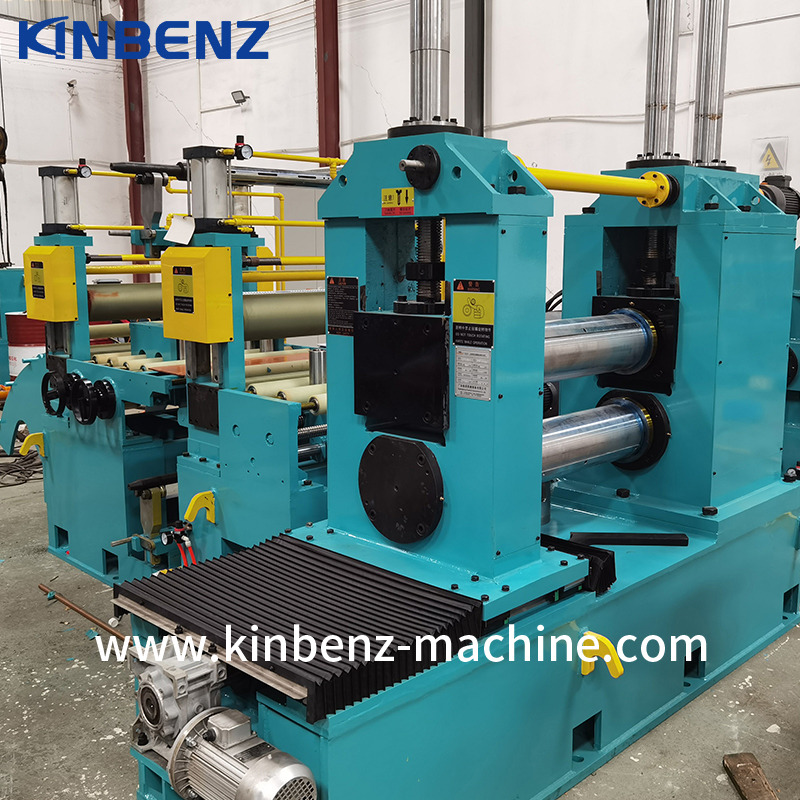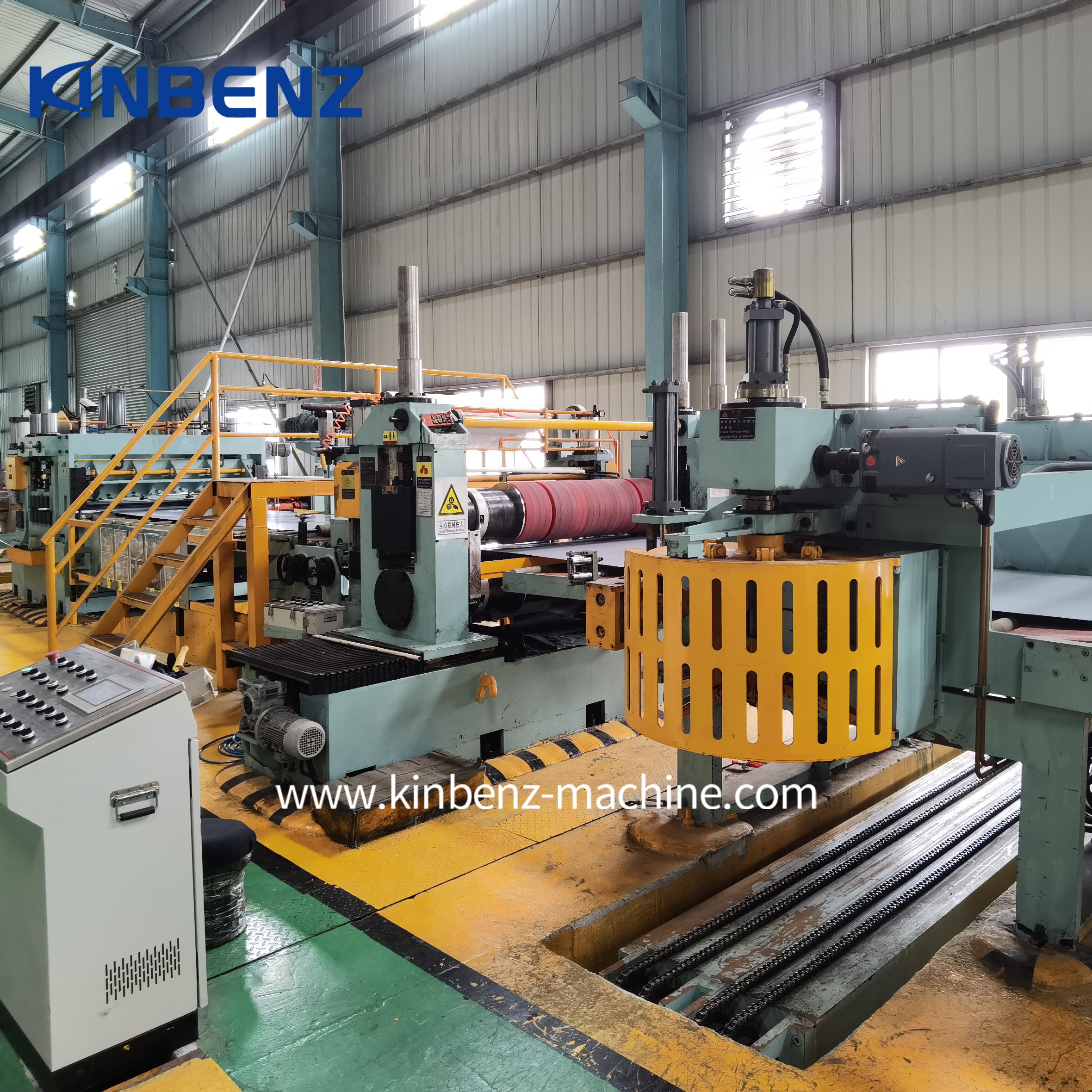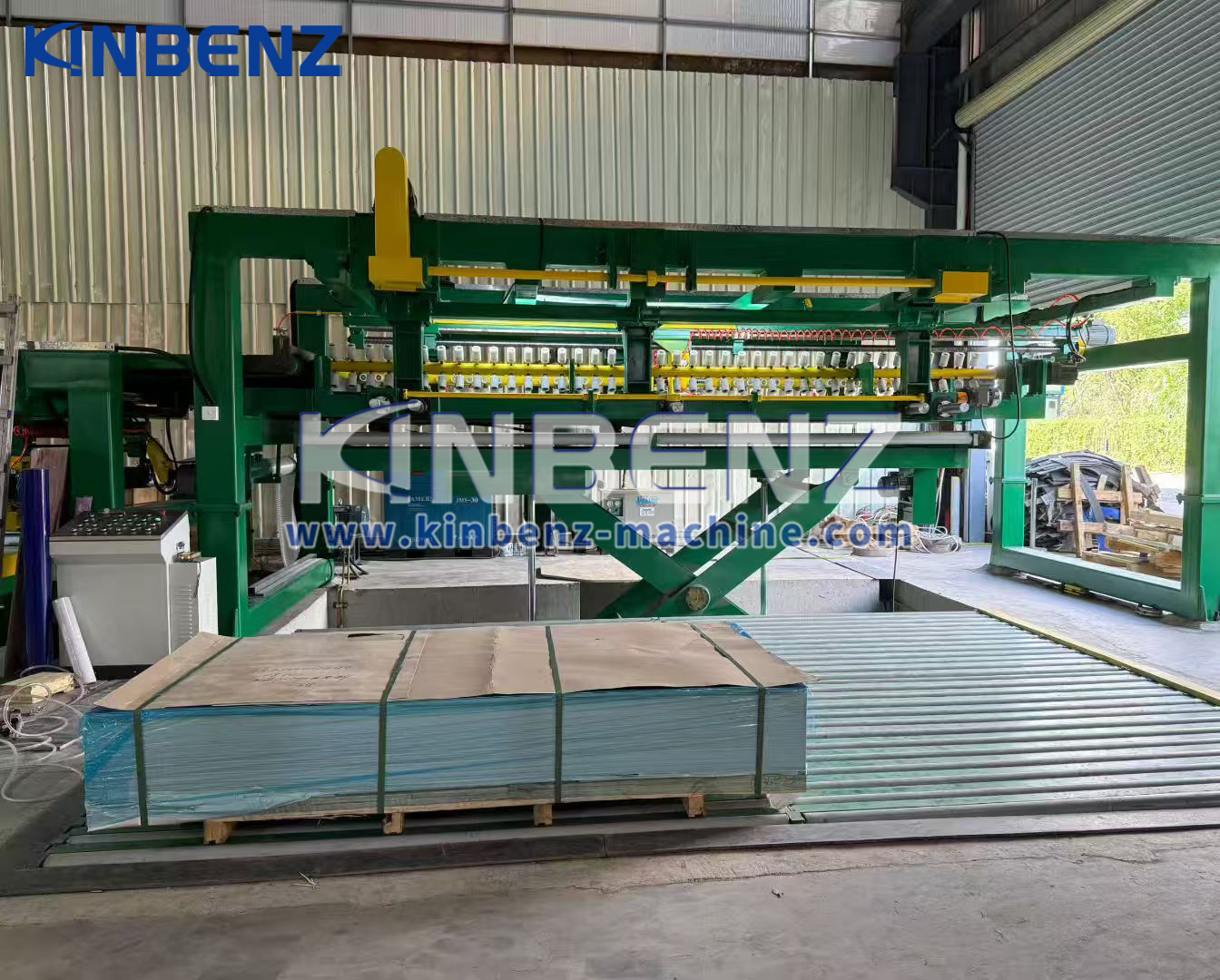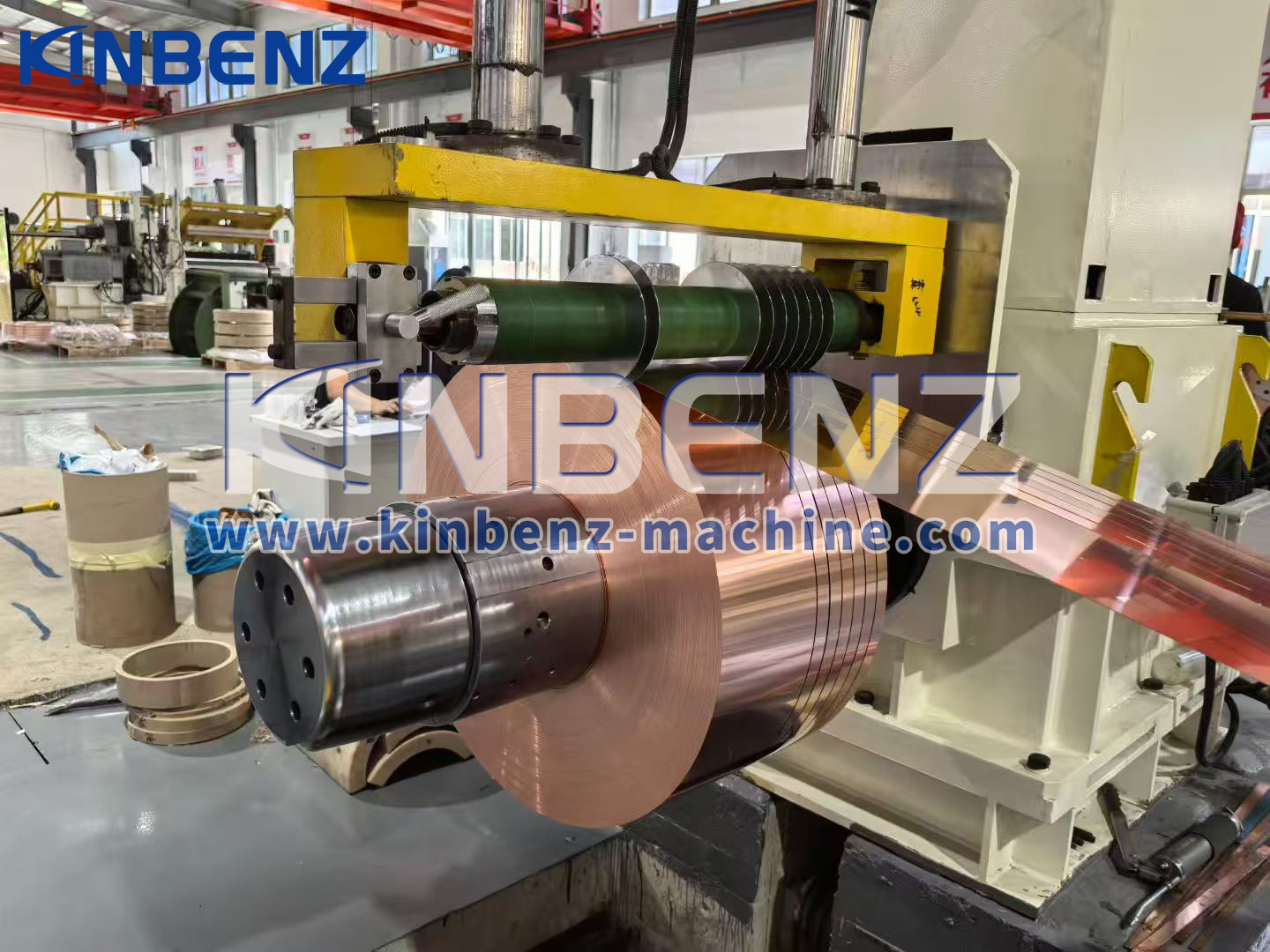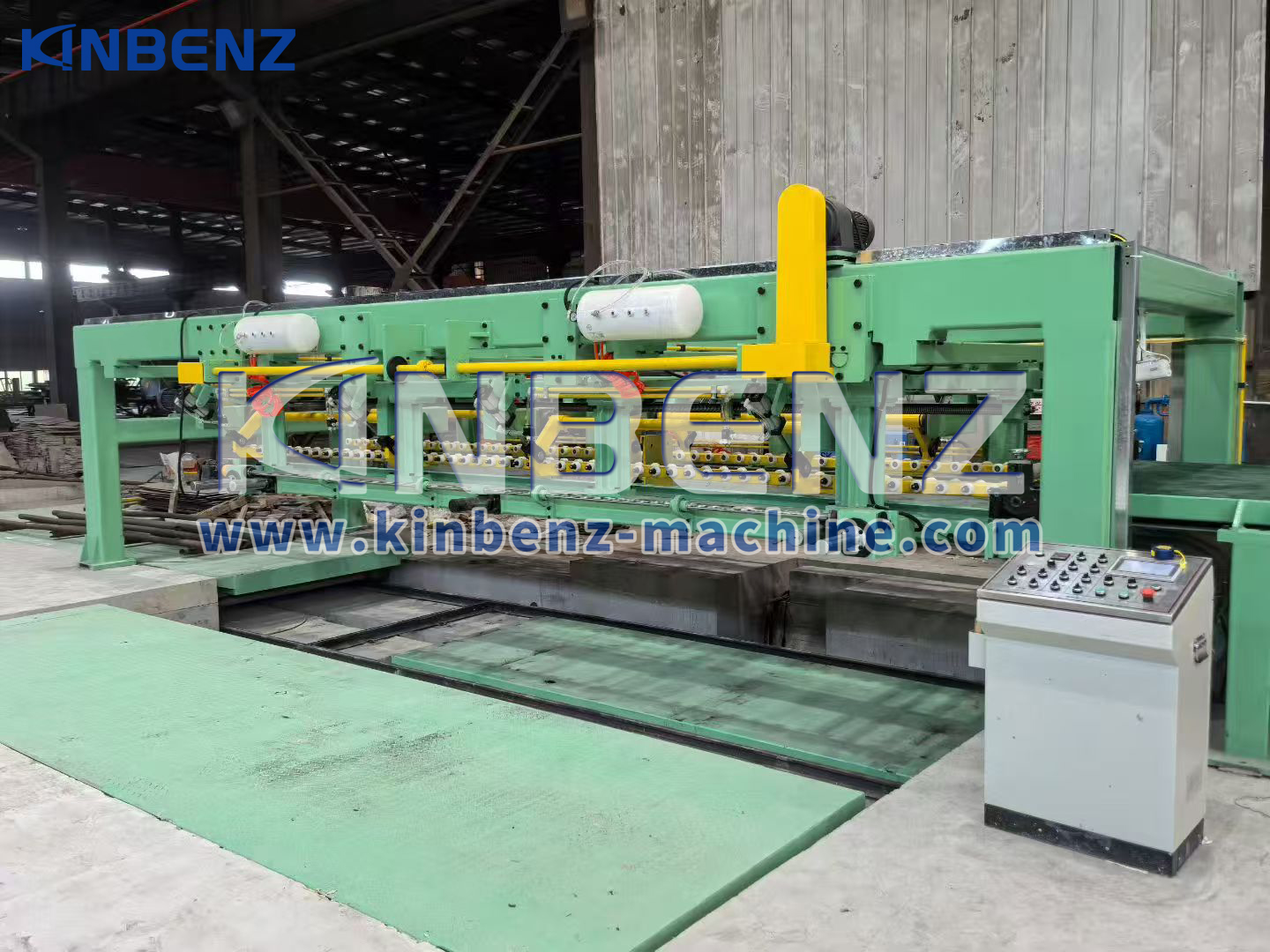|
|
How the Coil Thickness Parameter Affects the Proposal of a Cut to Length Line
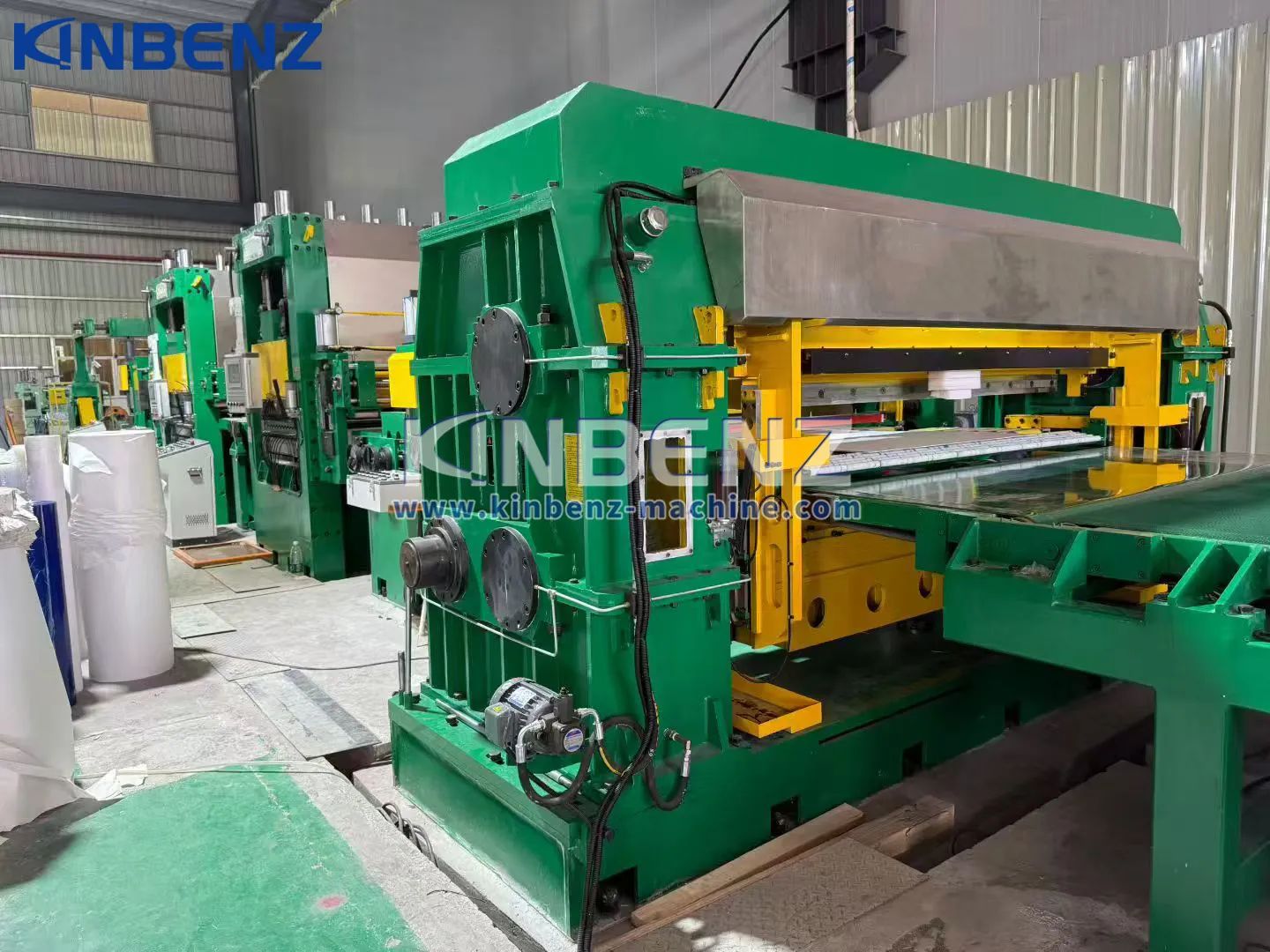
2025-10-22
At KINBENZ Machine, coil thickness is the foundation upon which every Cut to Length Line solution is customized. Let's take a closer look at how this parameter shapes the design, functionality, and efficiency of a complete cut to length line.
Understanding Coil Thickness: Thin Sheet VS. Thick Plate
Generally, coil materials are classified into two main categories based on their thickness range:
- Thin Sheet Coils: Typically range from 0.3mm to 3.0mm
- Thick Plate Coils: Usually above 3.0mm, extending up to 12mm, 16mm, or even 25mm in heavy-duty applications
Common Thin Coil Materials
Thin sheets are often made of copper, aluminum, stainless steel or galvanized steel, which required high precision and fast cutting speeds.
Common Thick Plate Materials
Thicker materials are usually hot-rolled steel, cold-rolled steel, galvanized steel, and carbon steel, which demand high torque, reinforced structure, and powerful shearing systems.
How Coil Thickness Impancts the CTL Line Design
Coil thickness directly determines the mechanical structure, power configuration, and operation method of the CTL line. Below are the main aspects influenced by this key parameter:
1. Uncoiler Design
Thicker coils are significantly heavier, requiring stronger hydraulic cantilever uncoilers or double-mandrel uncoilers with enhanced bearing capacity.
Thin coils, on the other hand, use standard hydraulic uncoilers with moderate power and compact structure.
2. Leveling System
Thin materials typically use 4-roll or 5-roll levelers, focusing on speed and surface protection. Thicker plates, require more and heavy-duty levelers to flatten the hign-strength material effectively.
3. Shearing Technology
- For thin sheets (≤3.0mm), Rotary Shear Cutting is ideal - capable for achieving speeds up to 80m/min for continuous high-speed production.
- For thick plates (≥4.0mm), Hydraulic Stop Shears are often used, emphasizing cutting power and precision over speed.
4. Line Speed & Power Requirement
Because thick materials demand more torque and energy, their line speed is usually slower around 0-30m/min.
Thin coil CTL lines prioritize efficiency and smooth feeding, often running two times faster.
5. Frame and Transmission Strength
A heavy gauge CTL line needs a more robust frame, thicker shafts, and a stronger gear transmission system to handle the high mechanical load of thick metal coils.
Why Coil Thickness Matters for Custom CTL Solutions
Every customer has unique production goals - whether it's high-speed processing for aluminum sheets or precision cutting for thick carbon steel plates.
By accurately providing your coil thickness range, our engineering team can design:
- The correct power configuration for each component
- The right shear mechanism to maintain flatness and cut accuracy
- The ideal line speed to match your productivity targets
Simply put, the entire proposal of a Cut to Length Line begins with coil thickness. It determines everything from layout to budget, ensuring get the right balance between performance and cost-effectiveness.
FAQ: Coil Thickness & Cut to Length Line Design
Q1: Why do you need my coil thickness before designing a CTL line?
A: Because coil thickness determines the machine's structure, leveling system, power setup, and cutting method. Without it, we can't defube a suitable solution.
Q2: What's the maximum thickness your CTL line can handle?
A: KINBENZ can design heavy-duty cut to length line capable of processing up to 20mm or even 25mm thickness, depending on the material type
Q3: How do you ensure cutting precision for thin materials?
A: Rotary shear cutting system with precise servo control to maintain high speed and clean edges, ideal for aluminum, copper and stainless steel coils.
At KINBENZ Machine, coil thickness is the foundation upon which every Cut to Length Line solution is customized. Let's take a closer look at how this parameter shapes the design, functionality, and efficiency of a complete cut to length line.
Understanding Coil Thickness: Thin Sheet VS. Thick Plate
Generally, coil materials are classified into two main categories based on their thickness range:
- Thin Sheet Coils: Typically range from 0.3mm to 3.0mm
- Thick Plate Coils: Usually above 3.0mm, extending up to 12mm, 16mm, or even 25mm in heavy-duty applications
Common Thin Coil Materials
Thin sheets are often made of copper, aluminum, stainless steel or galvanized steel, which required high precision and fast cutting speeds.
Common Thick Plate Materials
Thicker materials are usually hot-rolled steel, cold-rolled steel, galvanized steel, and carbon steel, which demand high torque, reinforced structure, and powerful shearing systems.
How Coil Thickness Impancts the CTL Line Design
Coil thickness directly determines the mechanical structure, power configuration, and operation method of the CTL line. Below are the main aspects influenced by this key parameter:
1. Uncoiler Design
Thicker coils are significantly heavier, requiring stronger hydraulic cantilever uncoilers or double-mandrel uncoilers with enhanced bearing capacity.
Thin coils, on the other hand, use standard hydraulic uncoilers with moderate power and compact structure.
2. Leveling System
Thin materials typically use 4-roll or 5-roll levelers, focusing on speed and surface protection. Thicker plates, require more and heavy-duty levelers to flatten the hign-strength material effectively.
3. Shearing Technology
- For thin sheets (≤3.0mm), Rotary Shear Cutting is ideal - capable for achieving speeds up to 80m/min for continuous high-speed production.
- For thick plates (≥4.0mm), Hydraulic Stop Shears are often used, emphasizing cutting power and precision over speed.
4. Line Speed & Power Requirement
Because thick materials demand more torque and energy, their line speed is usually slower around 0-30m/min.
Thin coil CTL lines prioritize efficiency and smooth feeding, often running two times faster.
5. Frame and Transmission Strength
A heavy gauge CTL line needs a more robust frame, thicker shafts, and a stronger gear transmission system to handle the high mechanical load of thick metal coils.
Why Coil Thickness Matters for Custom CTL Solutions
Every customer has unique production goals - whether it's high-speed processing for aluminum sheets or precision cutting for thick carbon steel plates.
By accurately providing your coil thickness range, our engineering team can design:
- The correct power configuration for each component
- The right shear mechanism to maintain flatness and cut accuracy
- The ideal line speed to match your productivity targets
Simply put, the entire proposal of a Cut to Length Line begins with coil thickness. It determines everything from layout to budget, ensuring get the right balance between performance and cost-effectiveness.
FAQ: Coil Thickness & Cut to Length Line Design
Q1: Why do you need my coil thickness before designing a CTL line?
A: Because coil thickness determines the machine's structure, leveling system, power setup, and cutting method. Without it, we can't defube a suitable solution.
Q2: What's the maximum thickness your CTL line can handle?
A: KINBENZ can design heavy-duty cut to length line capable of processing up to 20mm or even 25mm thickness, depending on the material type
Q3: How do you ensure cutting precision for thin materials?
A: Rotary shear cutting system with precise servo control to maintain high speed and clean edges, ideal for aluminum, copper and stainless steel coils.





